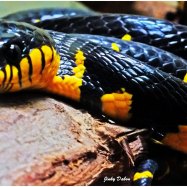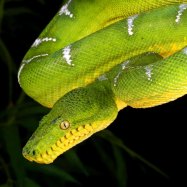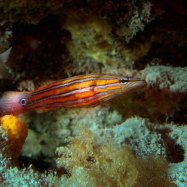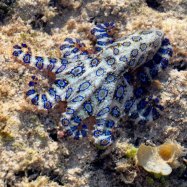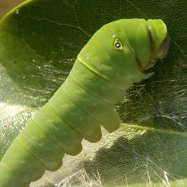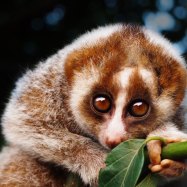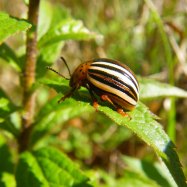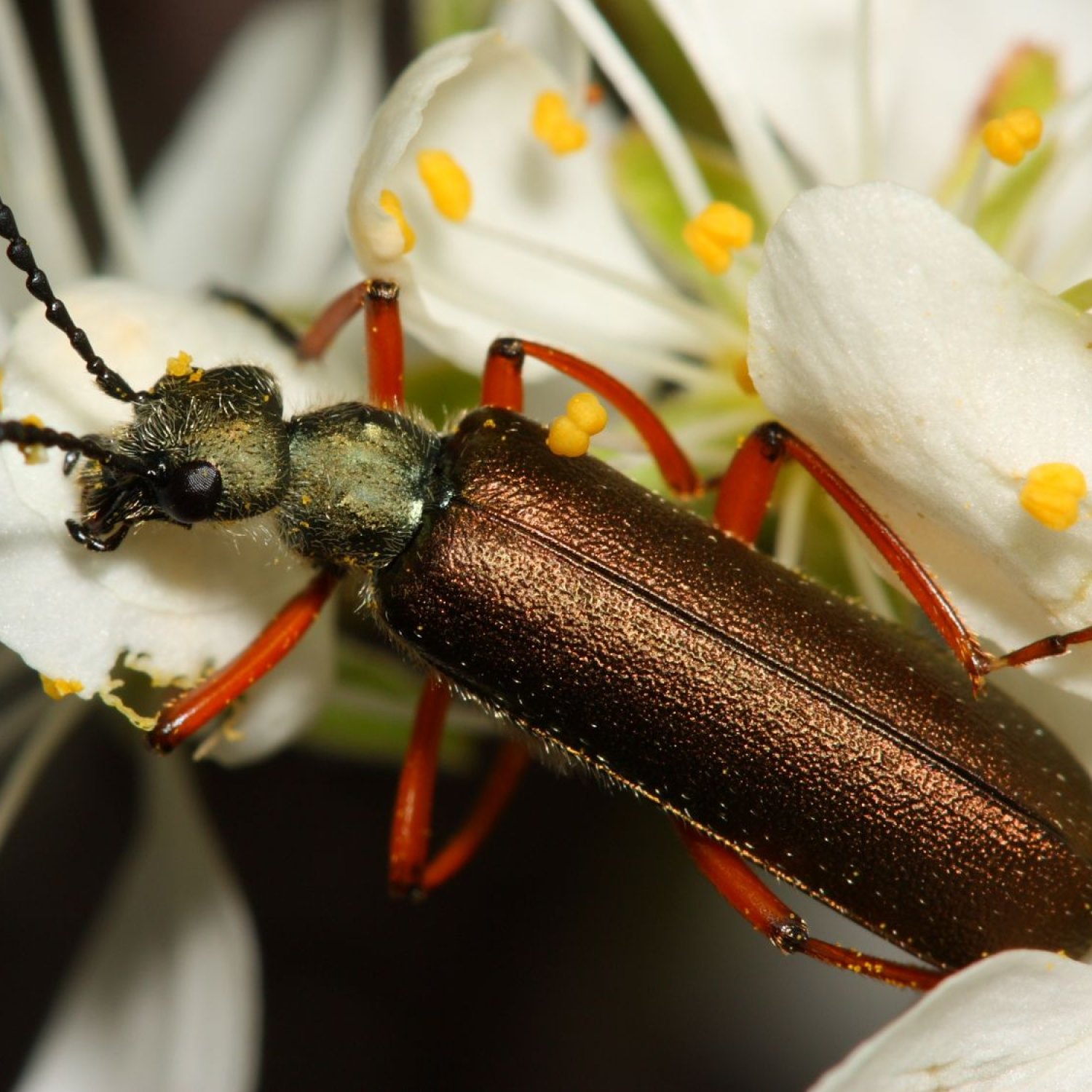
Blister Beetle
0.5 to 2 centimeters
Meet the Blister Beetle, a small but fascinating creature known for its unique defense mechanism of secreting a blister-causing chemical when threatened. These oval and elongated insects, found worldwide in the family Meloidae, range from 0.5 to 2 centimeters in length. So if you happen to spot one, admire its vibrant colors but be careful not to touch as they can pack quite the punch!
Animal Details Summary:
Common Name: Blister Beetle
Kingdom: Animalia
Habitat: Various habitats like grasslands, forests, and deserts
The Incredible Blister Beetle: An Insect Full of Surprises
In the vast kingdom of animals, there are many creatures that often go unnoticed or overlooked. One such creature is the blister beetle, scientifically known as Meloe spp. Despite its simplistic name, this beetle is a complex and fascinating insect that can be found in various habitats worldwide.Blister beetles belong to the Kingdom Animalia, which encompasses all animal species Blister Beetle. They fall under the Phylum Arthropoda, meaning they have jointed legs and a hard exoskeleton. These insects belong to the Class Insecta, which includes all insects, and the Order Coleoptera, which includes beetles of all kinds. Blister beetles are further classified under the Family Meloidae, a large family of beetles known for their distinctive defense mechanism.
Adaptable Habitat and Diet
One of the most interesting facts about blister beetles is their ability to thrive in various habitats. From grasslands to forests and even deserts, these insects can be found in diverse environments across the globe. This resilience is due to their herbivorous feeding method, meaning they solely rely on plants for sustenance.Blister beetles feed on a variety of plants, including alfalfa, soybeans, and potatoes. However, their diet is not restricted to plants alone. Some species of this beetle are known to feed on other insects, making them natural predators in their ecosystem Boston Terrier. This adaptability in both diet and habitat allows blister beetles to survive and thrive in even the harshest environments.
Global Distribution and Origin
Blister beetles are found worldwide, with some species being native to specific regions. For instance, the species Epicauta pennsylvanica is commonly found in North America, while Meloe naevius is predominantly found in Europe. These beetles are also present in Asia, Africa, and Australia, making them a truly global insect.The exact country of origin of blister beetles is unknown, as they are believed to be ancient insects that have evolved over millions of years. However, some experts believe that these beetles originated in the Mediterranean region and spread out from there. Regardless of their origins, blister beetles have managed to colonize many parts of the world, showcasing their impressive survival and breeding capabilities.
A Rainbow of Colors
While some may argue that beetles are not the most aesthetically pleasing insects, blister beetles are an exception to this rule. These insects showcase an array of colors, ranging from black, orange to even metallic blue. The striking coloration is one of the reasons why they are often mistaken for other beetle species, such as ladybugs.Their colors serve a purpose beyond just visual appeal. Insects with bright coloration often use them as a warning signal to predators, known as aposematic coloration. Blister beetles produce a toxin called cantharidin, which is highly irritating and can cause blisters and burns on the skin. Their bright colors serve as a warning to predators to stay away, avoiding unpleasant consequences.
An Unconventional Body Shape
In addition to their vibrant colors, blister beetles also have a unique body shape that sets them apart from other beetles. Their body is elongated and oval, with a narrow head and thorax, giving them a distinct appearance. This shape also aids in their movement, as they can easily maneuver through vegetation and escape predators.The average length of a blister beetle ranges from 0.5 to 2 centimeters. However, some species can grow up to five centimeters in length, making them one of the larger beetles in the insect world. Despite their small size, blister beetles have proven to be resilient and adaptable creatures, surviving and thriving in various environments.
The Blister Beetle's Defense Mechanism: A Marvel of Evolution
One of the most fascinating aspects of blister beetles is their unique defense mechanism. As mentioned earlier, these insects produce a toxin called cantharidin, which is released as a defense mechanism when they feel threatened. This toxin is present in their hemolymph, a fluid that circulates in their body, and is released through their legs when disturbed.Cantharidin is a potent toxin that can cause severe irritation, blisters, and even ulcers when in contact with the skin. In some species, it is so powerful that even a small amount can prove fatal to small animals. However, humans have found a way to use this toxin in a controlled manner. Cantharidin is known to have medicinal properties, and it is used to treat various medical conditions, including skin disorders and warts.
From Beetle to Beetle Juice
Blister beetles have been used for their medicinal properties for centuries. In ancient times, they were ground up and used as an aphrodisiac, earning them the nickname "Spanish fly." However, with advancements in medical science, cantharidin is now extracted from the beetles and used in a controlled and safe manner.The process of extracting cantharidin is a meticulous one, as it requires the beetles to be ground up and processed to obtain the toxin. This process has to be done carefully to prevent the toxin from coming into contact with human skin, as it can have severe consequences. Cantharidin is then used in small doses to treat various medical conditions.
A Threat to Livestock
While blister beetles have many interesting and even beneficial qualities, they can also be problematic for those in the agriculture industry. These insects have been known to infest crops and can cause significant damage to plants. However, the biggest threat blister beetles pose is to livestock.Beetles can often be found in hay, and when ingested by livestock, their cantharidin toxin can prove to be fatal. Horses are especially vulnerable to this toxin, and just a handful of beetles in their feed can cause sickness and even death. This danger makes it essential for farmers to carefully inspect their hay for beetles and take necessary precautions to protect their livestock.
The Blister Beetle's Role in the Ecosystem
Despite their potential threat to crops and livestock, blister beetles are a vital part of their ecosystem. As herbivorous insects, they help maintain a balance in plant populations, preventing overgrowth and promoting biodiversity. As predators of other insects, they also control the population of certain pest species, preventing them from causing harm to crops.Their bright coloration also serves as a warning to potential predators, reducing the chances of being preyed upon. Additionally, blister beetles are a vital food source for other animals, such as birds and small mammals, playing a crucial role in the food chain.
The Future of Blister Beetles
With their adaptability, unique defense mechanism, and role in the ecosystem, blister beetles have shown to be resilient creatures that can withstand changing environments. However, like many other insect species, they face threats such as climate change, loss of habitat, and the use of pesticides.It is crucial for humans to understand the value and importance of these insects in their environment. Taking steps to protect their habitats, reducing the use of harmful pesticides, and being mindful of their presence in crops and hay can go a long way in preserving blister beetles for future generations.
In conclusion, the blister beetle is a remarkable insect that deserves more recognition and appreciation. From their diverse habitats and adaptable diet to their vibrant colors and unique defense mechanism, they are truly a marvel of evolution. While they may have their drawbacks, their role in the ecosystem makes them an essential part of the natural world. So the next time you come across a blister beetle, take a moment to observe its beauty and appreciate the remarkable capabilities of this small but mighty creature.

Blister Beetle
Animal Details Blister Beetle - Scientific Name: Meloe spp.
- Category: Animals B
- Scientific Name: Meloe spp.
- Common Name: Blister Beetle
- Kingdom: Animalia
- Phylum: Arthropoda
- Class: Insecta
- Order: Coleoptera
- Family: Meloidae
- Habitat: Various habitats like grasslands, forests, and deserts
- Feeding Method: Herbivorous
- Geographical Distribution: Found worldwide
- Country of Origin: N/A
- Location: N/A
- Animal Coloration: Varies depending on the species, but commonly black, orange, or metallic blue
- Body Shape: Oval and elongated
- Length: 0.5 to 2 centimeters
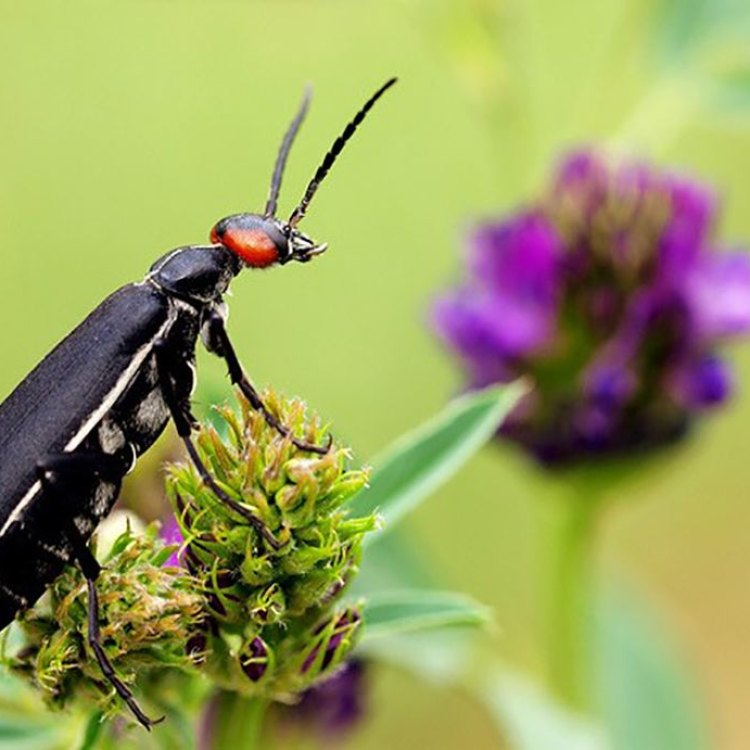
Blister Beetle
- Adult Size: 0.5 to 2 centimeters
- Average Lifespan: 1 to 2 years
- Reproduction: Sexual
- Reproductive Behavior: Females lay eggs in soil or plant material, and the larvae hatch and go through several stages before becoming adult beetles
- Sound or Call: N/A
- Migration Pattern: Non-migratory
- Social Groups: Solitary
- Behavior: Blister beetles secrete irritants known as cantharidin, which can cause blistering and other skin irritations in humans and animals
- Threats: Predation, habitat loss, and pesticide exposure
- Conservation Status: Varies depending on the species
- Impact on Ecosystem: Pollination and pest control
- Human Use: Used in traditional medicine and in the production of cantharidin for medical and industrial purposes
- Distinctive Features: Long and slender body, soft elytra (wing coverings)
- Interesting Facts: Some species of blister beetles are attracted to and feed on flowers, while others are predators of other insects
- Predator: Birds, reptiles, and other insects
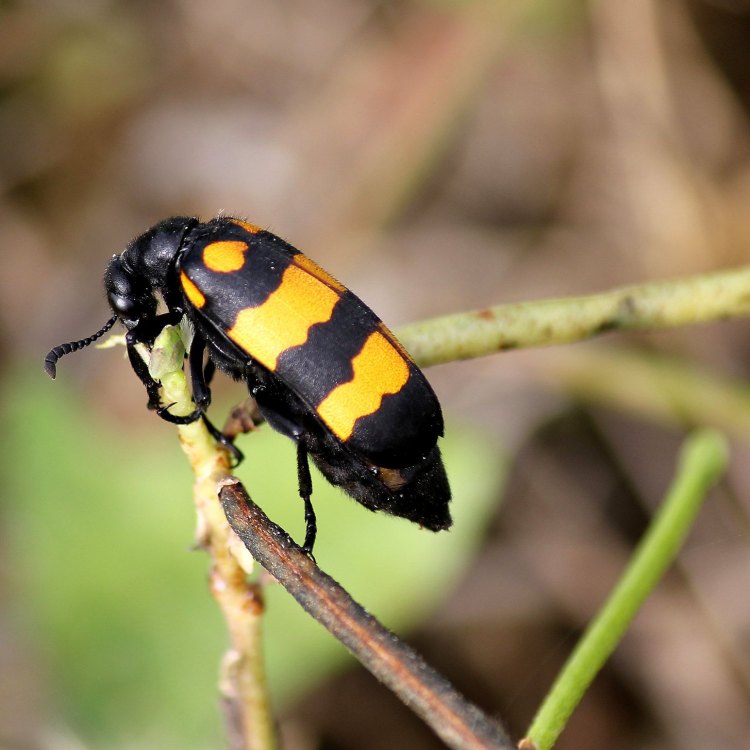
Meloe spp.
The Remarkable Blister Beetle: A Tiny Yet Mighty Insect
Have you ever come across a small yet strikingly beautiful beetle with an elongated body and bright colors? If so, you may have encountered a blister beetle. Found in various parts of the world, these fascinating insects have a lot more to offer than just their eye-catching appearance. From unique behaviors to intriguing facts, blister beetles are truly a marvel of nature.Let's dive into the world of blister beetles and uncover their distinctive features, behaviors, and impact on the ecosystem PeaceOfAnimals.Com.
What Are Blister Beetles?
Blister beetles belong to the family Meloidae, which contains over 2,500 species. They are known for their elongated and slender body, ranging in size from 0.5 to 2 centimeters, and vibrant colors ranging from yellow to metallic green. These insects can be found in various habitats, from deserts to forests, and are commonly found in North America, Europe, and Africa.Interestingly, blister beetles got their name from the unique defense mechanism they possess. When threatened, they secret a chemical compound called cantharidin, which can cause blisters and other skin irritations in humans and animals. This is why they are also commonly known as "Spanish fly" or "blisterbugs."
The Life of a Blister Beetle
Blister beetles have a relatively short lifespan of 1 to 2 years. They undergo sexual reproduction, with females laying their eggs in soil or plant material Box Headed Blood Bee. After hatching, the larvae go through several stages before becoming adult beetles.One of the most interesting aspects of their reproductive behavior is that some species of blister beetles have a peculiar mating ritual. The male beetle will attract a female by releasing a pheromone, and if successful, the female will lay her eggs near the male's territory. This territorial behavior is fascinating as it allows the female to choose the best location for her offspring to survive and thrive.
The Lone Wolf of the Insect World
Unlike other social insects like ants or bees, blister beetles are solitary insects. They do not form colonies or have any type of social structure. This means that they generally live and forage alone, although they may come together during mating season.As solitary insects, they also do not have the need to communicate with other members of their species. Therefore, blister beetles do not produce any sound or call.
Threats to Blister Beetles
Like many other insect species, blister beetles face various threats in their environment. One of the biggest threats is predation from birds, reptiles, and other insects. Their bright colors act as a warning signal to potential predators that they possess a chemical defense mechanism. However, this alone may not be enough to protect them, and many blister beetles fall prey to their predators.Additionally, habitat loss due to human activities such as agriculture and urbanization can have a significant impact on blister beetles. Pesticides and other chemicals used in agriculture can also be harmful to blister beetles, as they can kill them or impact their reproductive behavior.
Conservation Status and Impact on Ecosystem
The conservation status of blister beetles varies depending on the species. Some species are considered endangered due to habitat loss and pesticide exposure, while others are more resilient and have a stable population.These insects may be small, but they play a crucial role in the ecosystem. As pollinators, blister beetles contribute to the reproduction of plants, while some species also serve as predators of other insects, helping to control pest populations.
Blister Beetles and Humans
Blister beetles have had a long-standing relationship with humans, both beneficial and harmful. In some cultures, blister beetles have been used in traditional medicine for various ailments, such as bladder problems and warts. However, due to their toxic properties, they must be used with caution, and medical professionals should be consulted before use.On the other hand, blister beetles have also been exploited for industrial and medical purposes. Cantharidin, the chemical compound secreted by blister beetles, has been used in the pharmaceutical industry, primarily for treating warts. It is also used in the production of "Spanish fly," a substance that has been used as a supposed aphrodisiac.
Distinctive Features of Blister Beetles
Apart from their chemical defense mechanism, blister beetles possess several other distinctive features. Their long and slender body allows them to burrow underground and move efficiently in narrow spaces. Their soft elytra (wing coverings) also aid in this process by being flexible and easily moldable.One of the most intriguing features of blister beetles is their attraction to and feeding on flowers. Some species are entirely vegetarian, and their larvae feed on grasshopper eggs, while others are predators of other insects. This diverse diet makes them an important part of the food chain.
The Blister Beetle: A Unique Insect
Blister beetles may seem like just another insect, but upon closer observation, they are truly unique and fascinating creatures. From their solitary lifestyle to their chemical defense mechanism and diverse diet, this small insect has a lot to offer.As with all other living beings, it is essential to protect and preserve their natural habitats to ensure the well-being of blister beetles and other insect species. By understanding their behavior and impact on the ecosystem, we can appreciate and coexist with these tiny yet mighty insects. So, the next time you see a blister beetle, remember the wonders that it holds and the role it plays in our ecosystem.
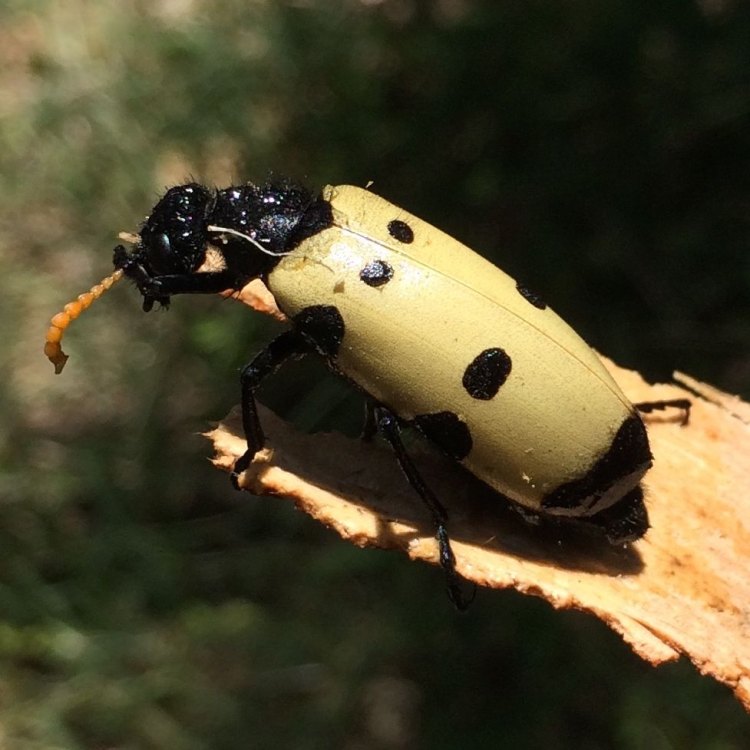
The Incredible Blister Beetle: An Insect Full of Surprises
Disclaimer: The content provided is for informational purposes only. We cannot guarantee the accuracy of the information on this page 100%. All information provided here may change without prior notice.

